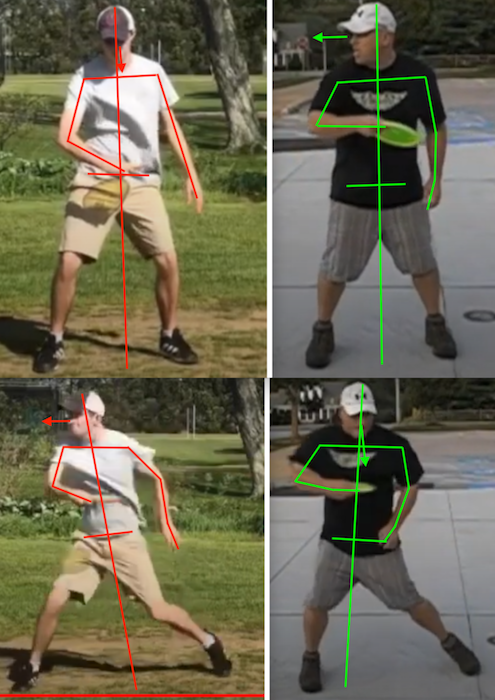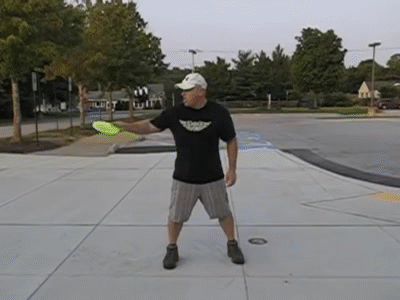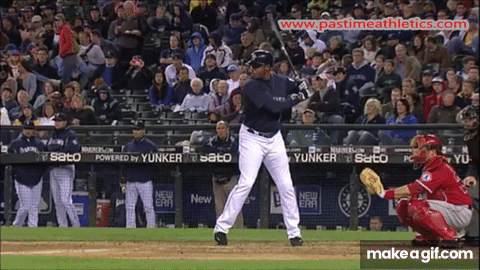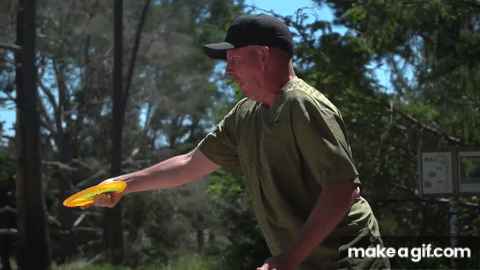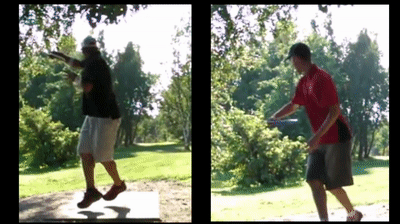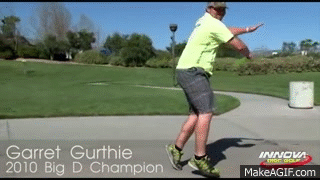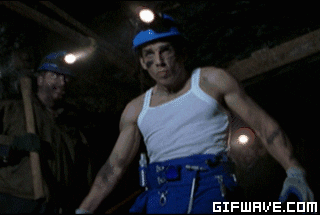Yeah, it's odd how often his gifs show up.
But to your point: I think there's value in trying to emulate the majority of pros on this rather than go with something more idiosyncratic. A shorter. later backswing and a more stable axis of rotation seem worth pursuing.
Anthon's form appears a lot because of how odd it is. For sure heed the wisdom of crowds; but also don't forget the instructive value of outliers. What can examining Anthon's unconventional technique reveal about the underlying power mechanisms of the disc golf throw? In other words, the motions that make Anthon's throw look idiosyncratic are window dressing or fluff or all the stuff that's not peanuts or M&M's in trail mix, right?
So, the real point I'm making above is that analyzing Anthon's form helps to demonstrate what's really important in the "loose arm pendulum" vs. "work around the disc" discussion (which, in my opinion, is no different than the "keep head straight/ down" vs "watch the disc" discussion): it's shoulder orientation.
Stand up and let your arms hang from your shoulders with your hands resting flat against the outside (away from COG) of each leg. Use your shoulders to rotate your thumb outward from your COG so that your palms are facing forward. Or, do your best double thumbs up Fonzi impression because you actually didn't clog your in-laws toilet as you had feared & it went down on the second flush. Focus on the tension/ feeling in the shoulder. This is external shoulder rotation. This is the predominant shoulder feeling when trying to "work around the disc".
Now, rotate your thumbs inward toward your legs/ butt, so that your palms are facing outward away from you. Focus on the loose, forward feeling of the shoulders in this position. To me, it feels like the very beginning of bending down to tie my shoes or touch my toes. This is internal shoulder rotation. This is the predominant shoulder feeling of the "loose arm pendulum".
If you're after easy distance in the disc golf throw, your throwing shoulder should roll from a relative internal rotation position to a relative external rotation position, as described by the exercises above. What Anthon's form teaches is that the internal rotation shoulder position only needs to happen briefly and at the very top of the backswing. This is actually synced to when he picks his thumb off the disc & probably one of the reasons he does it - at that exact moment his throwing shoulder transitions from the external rotation orientation to the internal rotation orientation. Watch again.

So you might try combining your "work around the disc" throw shoulder feeling with your "loose arm" throw shoulder feeling, but only enter the "loose arm" throw shoulder feeling (relative internal rotation) very briefly at the top of the backswing (so as you're shifting pressure/ weight to the front). That's what Anthon accomplishes, & he sequences it with his floating finger. It might be useful to imagine someone grabbing the other end of your disc (aka doorframe drill!), but they only do it at the very top of the backswing. Or do some swings without a disc since gripping something seems to complicate this motion (another reason why Anthon might lift the thumb). Without a disc, it's easy to feel the arm acceleration added with this shoulder orientation sequence.
It's also important not to forget the symmetry of the disc golf throw - if the lead throwing shoulder should go from relative internal rotation at the top of the backswing to relative external rotation during the swing, then the trailing off shoulder must go from relative external rotation at the top of the backswing to relative internal rotation during the swing. Think SW22 swim move or Paul McBeth off-arm pump etc. - how do those motions position the trail shoulder? With the thumb rotated toward the leg/butt and the palm outward away from the COG/ target just like the internal shoulder rotation exercise described above.
Here's one more outlier that might offer some wisdom - Linus Astrom on the right below. He brings his rear arm over his head. Try it. Feel how it forces your trail shoulder to go from the relative external rotation position to the relative internal rotation position (overhand throws like in baseball or football make use of this same shoulder orientation sequence from external to internal to produce power).

